Laptop Mag Verdict
Alienware’s first ever dual resolution monitor is an absolute success, but it’s only worth it for a niche selection of gamers.
Pros
- +
Dual resolution feature
- +
High nits of brightness
- +
Colorful LED panel
- +
Easy to set up
Cons
- -
Only worth it if you make full use of its features
- -
Swapping resolutions is a bit finicky
Why you can trust Laptop Mag
Alienware’s first ever dual resolution monitor, the AW2725QF, is an absolute success, but it’s worth it for only a niche selection of gamers.
If you’re the type of gamer who cannot seem to find a single display that fulfills all of your needs, the latest trend in dual resolution monitors might be what you’re looking for. Alienware is far from the first to incorporate this new technology, appearing in monitors like the Asus ROG Strix XG27UCG. But how Alienware implemented it is mighty impressive.
The Alienware AW2725QF is a 27-inch monitor that features a base output with a 3,840 x 2,160-pixel resolution at 180Hz, which is excellent for high-fidelity gaming, but it can also swap to a 1,920 x 1,080-pixel resolution mode at a 360Hz refresh rate, ideal for fast-paced gaming. This makes it a fantastic choice for competitive players who also enjoy high resolution content. But beyond that, it’s a fantastic monitor overall. Keep reading to see why it’ll likely make it onto our list of best gaming monitors.
Alienware AW2725QF: Price and configuration
The Alienware 27-inch 4K Dual Resolution gaming monitor is unique in that the specs of its panel aren’t stagnant. It’s referred to as a “dual resolution” display because it can swap between 3,840 x 2,160 (4K) pixel resolution at up to 180Hz refresh rate or 1,920 x 1,080 (FHD) pixel resolution at 360Hz refresh rate. It fulfills the best of both worlds (performance and fidelity) and is available for $599 at Dell’s website.
Alienware AW2725QF: Setup
Dell has always had a knack for making the setup process as easily as possible. You don’t need any tools whatsoever, and thanks to the panel being 27 inches, it is light enough that I had no issues moving it out of the box and laying it softly on a cushion.
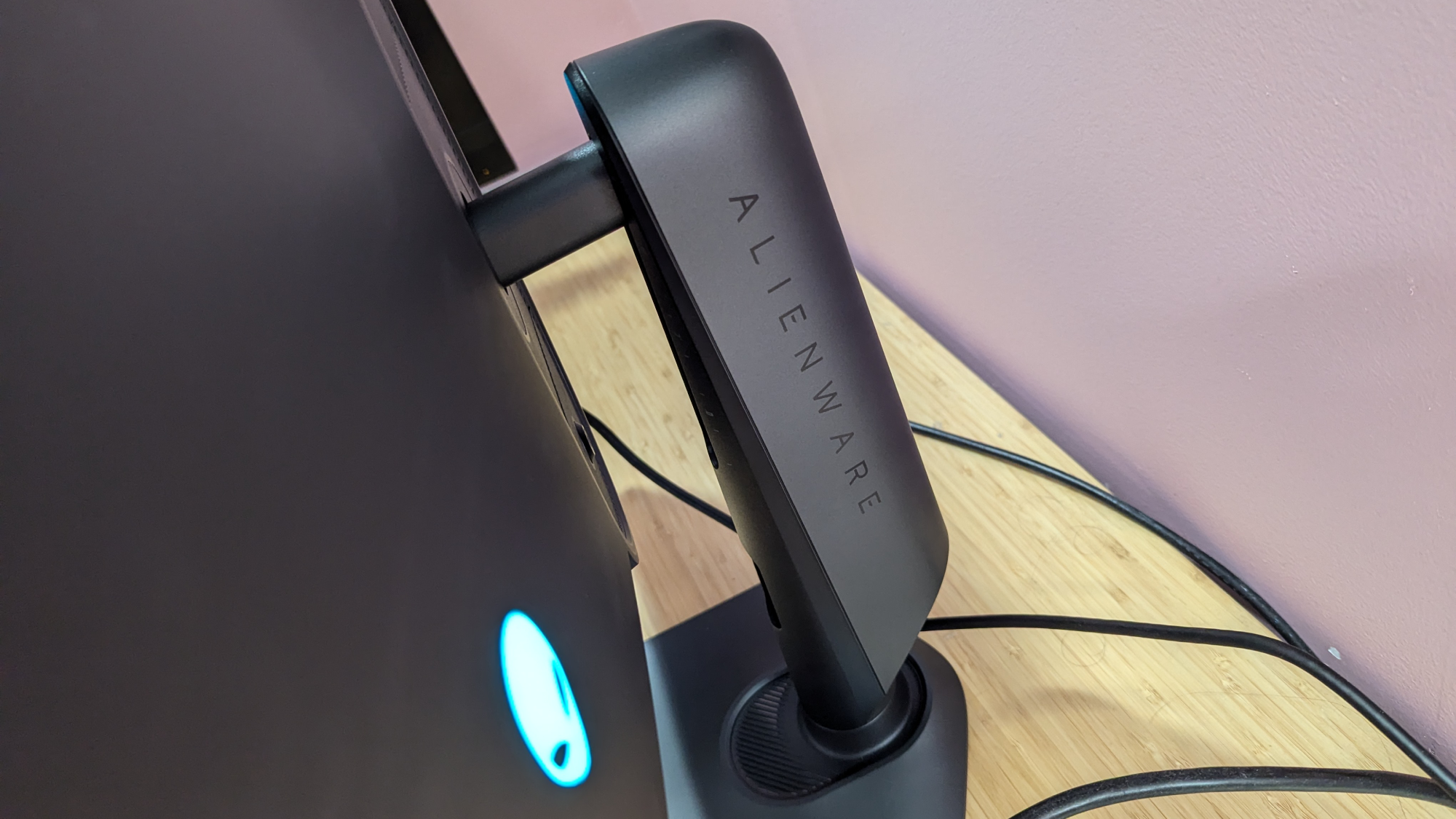
Simply attach the base to the arm and turn the knob at the bottom until it’s tight, then slot the arm into the back of the display. It took less than a minute to do and I will never get tired of manufacturers developing hardware that can be set up without the need for a screwdriver or other tools.
Alienware AW2725QF: Design
The AW2725QF doesn’t change much in its design when compared to the Alienware monitors from earlier in the year, boasting the same pentagonal base and Dark Side of the Moon color finishes. However, the display’s bezels are a little thinner compared with the AW2725DF, resulting in a slightly smaller monitor overall.
Sign up to receive The Snapshot, a free special dispatch from Laptop Mag, in your inbox.
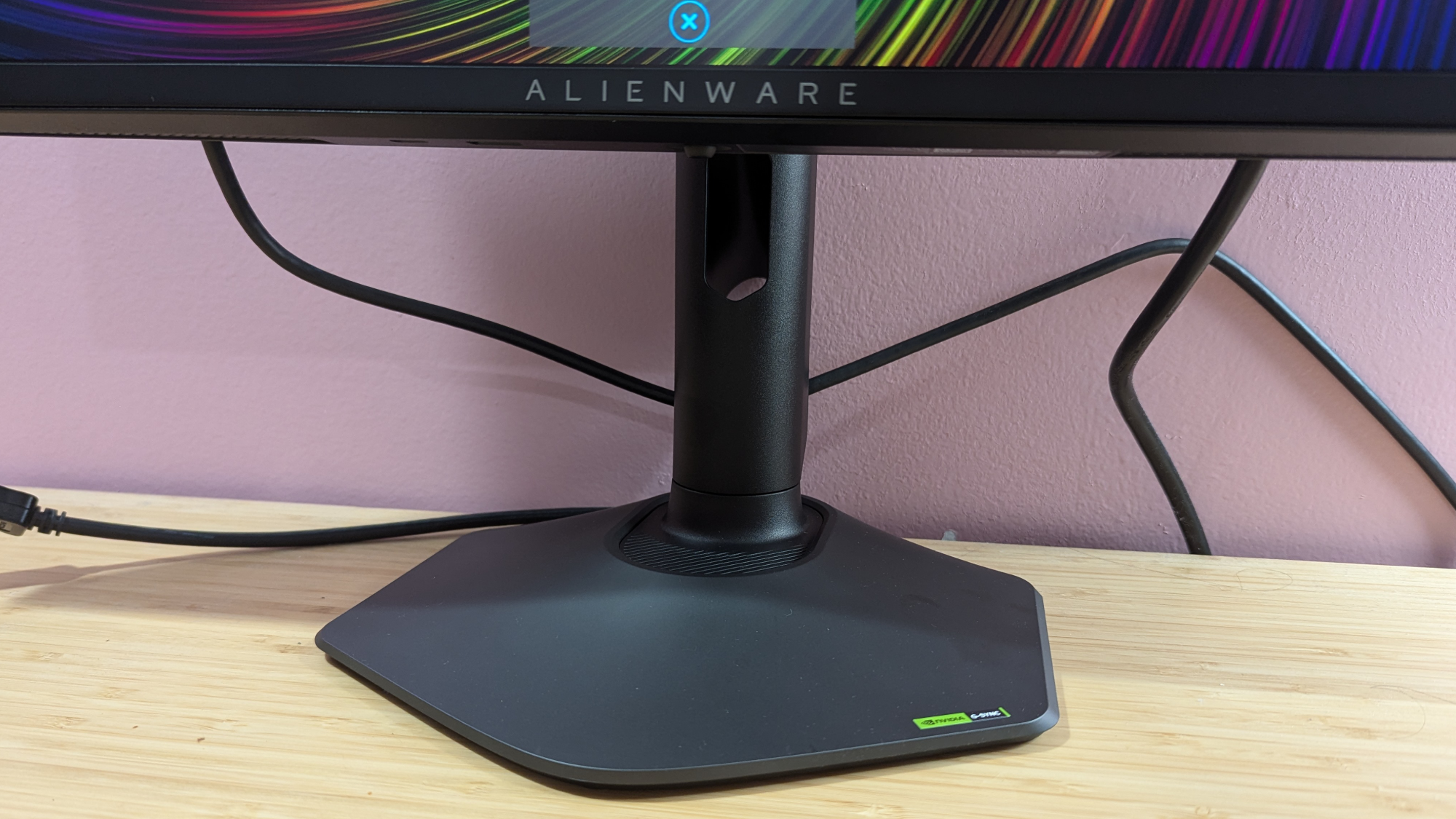
Alienware continues to utilize a joystick design for controlling its menu, and it’s an absolute blessing. Being able to conveniently scroll through menu items with a single knob is a huge time saver.
It features a maximum adjustable height of 4.3 inches, a tilt angle from -5 to 21 degrees, a swivel angle from -20 to 20 degrees, and a pivot from -90 to 90 degrees.
The Alienware AW2725QF weighs 15.8 pounds and measures 24.1 x 16.1-20.4 x 9.6 inches, making it surprisingly light. This is especially notable when compared to its OLED sibling, the Alienware AW2725DF (21 pounds, 24 x 16-20.3 x 9.6 inches), which has the same dimensions yet is far heavier. Other competitors like the Lenovo ThinkVision P27u-20 (17.7 pounds, 24.2 x 21.9 x 8.7 inches) and ASRock Phantom Gaming PG34 (29.8 pounds, 31.9 x 22.9 x 13.1 inches) are heavier, although it’s no surprise since the latter monitor is an ultrawide.
Alienware AW2725QF: Ports
The Alienware 27-inch 4K Dual Resolution gaming monitor features two HDMI 2.1 ports and one DisplayPort 1.4 connection, all three of which support 3,840 x 2,160 resolution at 165Hz refresh rate or 1,920 x 1,080 resolution at 330Hz refresh rate (which can be overclocked up to 180Hz and 360Hz respectively). It also has a USB Type-B port.
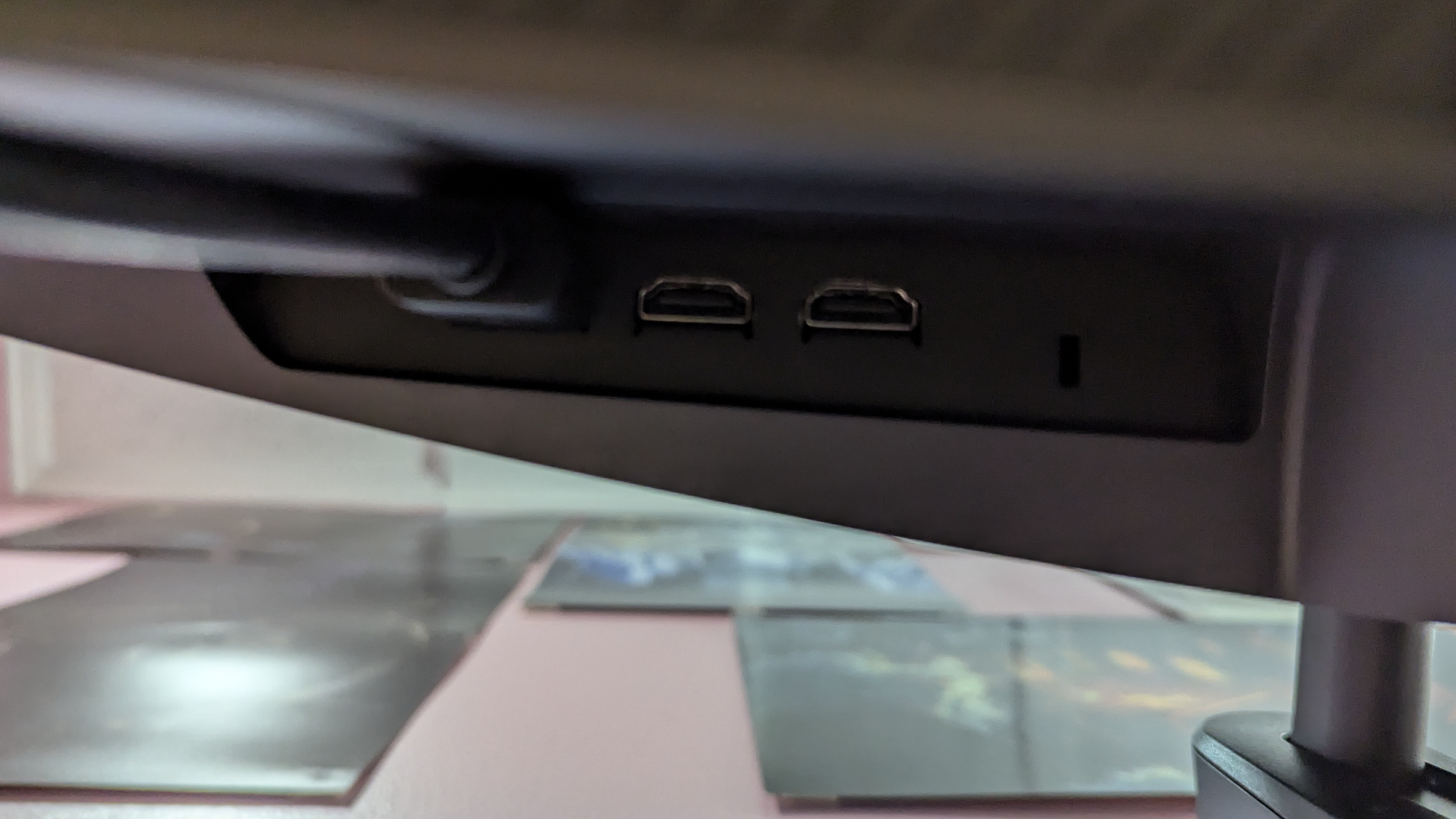
It has four downstream ports in the form of one USB Type-C and three USB Type A, which can connect devices for charging. Two of these USB Type-A support BC 1.2 power charging.
It comes with one power cord, an HDMI 2.1, a DisplayPort, and a USB Type-A to Type-B cable.
Alienware AW2725QF: Display
This 27-inch matte LED display features an option to quickly swap between 3,840 x 2,160-pixel resolution at 180Hz and 1,920 x 1,080-pixel resolution at 360Hz, and much of the Alienware A2725QF’s main appeal comes from this. It also supports Nvidia G-Sync and VESA AdaptiveSync.
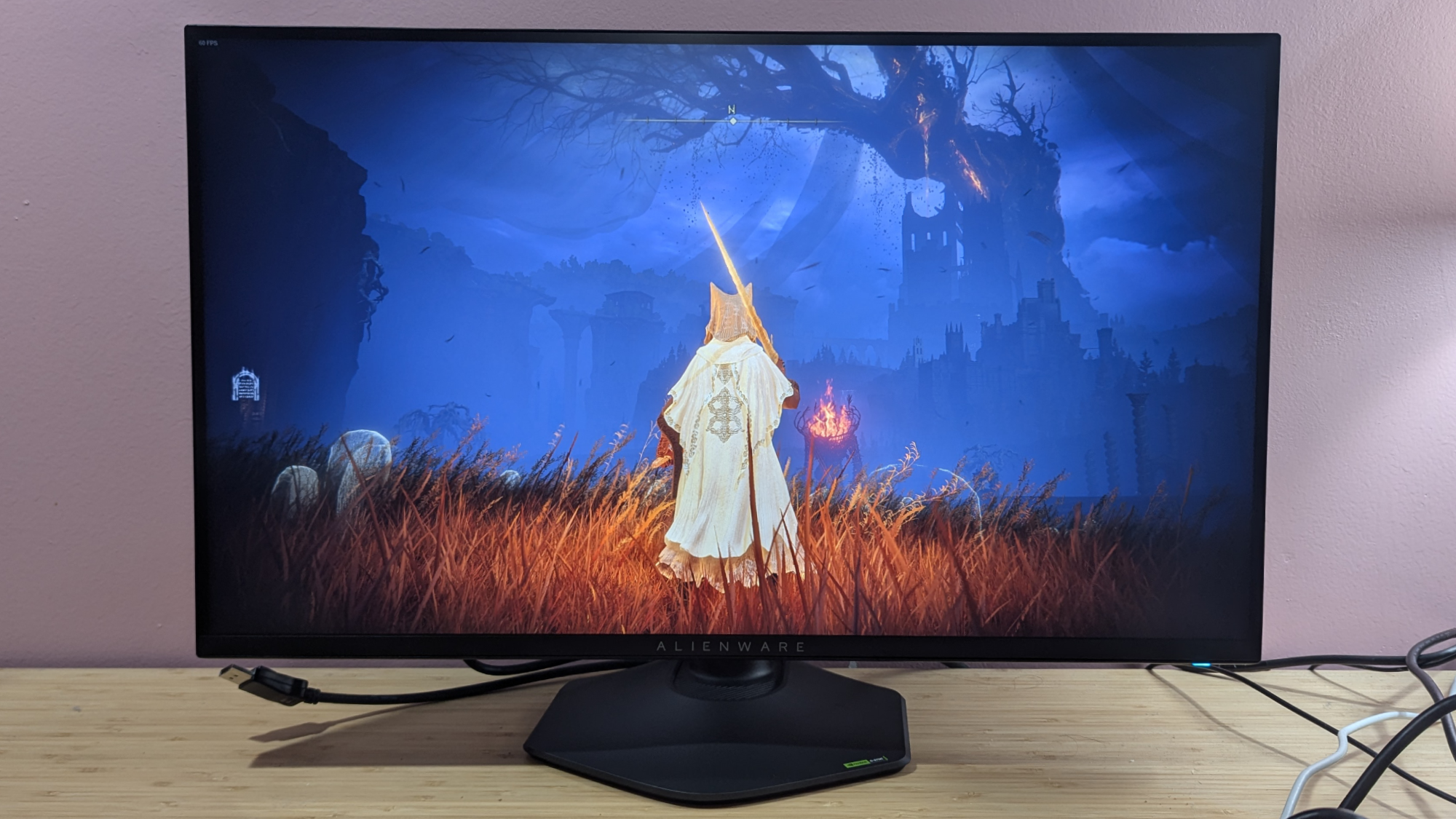
Its dual resolution focus appeals to the best of both worlds. Higher resolution is perfect for single player games or lower-stakes multiplayer titles, especially those where you want fidelity first and foremost. Higher refresh rate goes hand-in-hand with frame rate, so if you’re playing a multiplayer game where things happen quickly, reacting just a millisecond faster could be the difference between life and death; higher refresh rate is what competitors need.
The issue is that having a high resolution panel at a very high refresh rate is pretty rare, and where it does exist, it’s expensive. Thus, the Alienware AW2725QF fulfills both, and while it isn’t necessarily doing it at the same time, it’s unnecessary to. It’s incredibly difficult (and costly) to run games at 4K and hit high frame rates, so the resolution will need to be lower anyway.
I launched Elden Ring: Shadow of the Erdtree and you cannot beat the smoothness of 3,840 x 2,160-pixel resolution. I typically play the game on a 2K monitor, and while it looks crisp enough for the most part, the difference is astronomical.
As I ran throughout a dense field of grass illuminated by the torch in my hand, the foggy glow of the night sky contrasted brilliantly against the warmth of the flickering flame. While it’s not as beautiful to bask in as my OLED, it’s impressive how pretty this panel is.
I watched the trailer for the Minecraft movie, and while the content of said trailer was awful, the panel did an excellent job representing the vibrancy of the world. The contrast between Jason Mamoa’s pink jacket and the bold green trees occupying the background made it clear just how capable this panel is in the realm of color. Even in my bright office, no scene appeared dim.
The Alienware AW2725QF covered exactly 100% of the DCI-P3 color gamut on our tests at default settings. This is fantastic for an LED panel, ensuring you can enjoy your games at a level of vibrancy that won’t disappoint.
It couldn’t quite compete when compared to its OLED sibling, the AW2725DF (131%), but that’s no surprise considering its panel is designed to offer bolder colors and deeper blacks. The ASRock Phantom Gaming PG34 (90%) was a bit less colorful, but the Lenovo ThinkVision P27u-20 (105%) pulled slightly ahead in vibrancy.
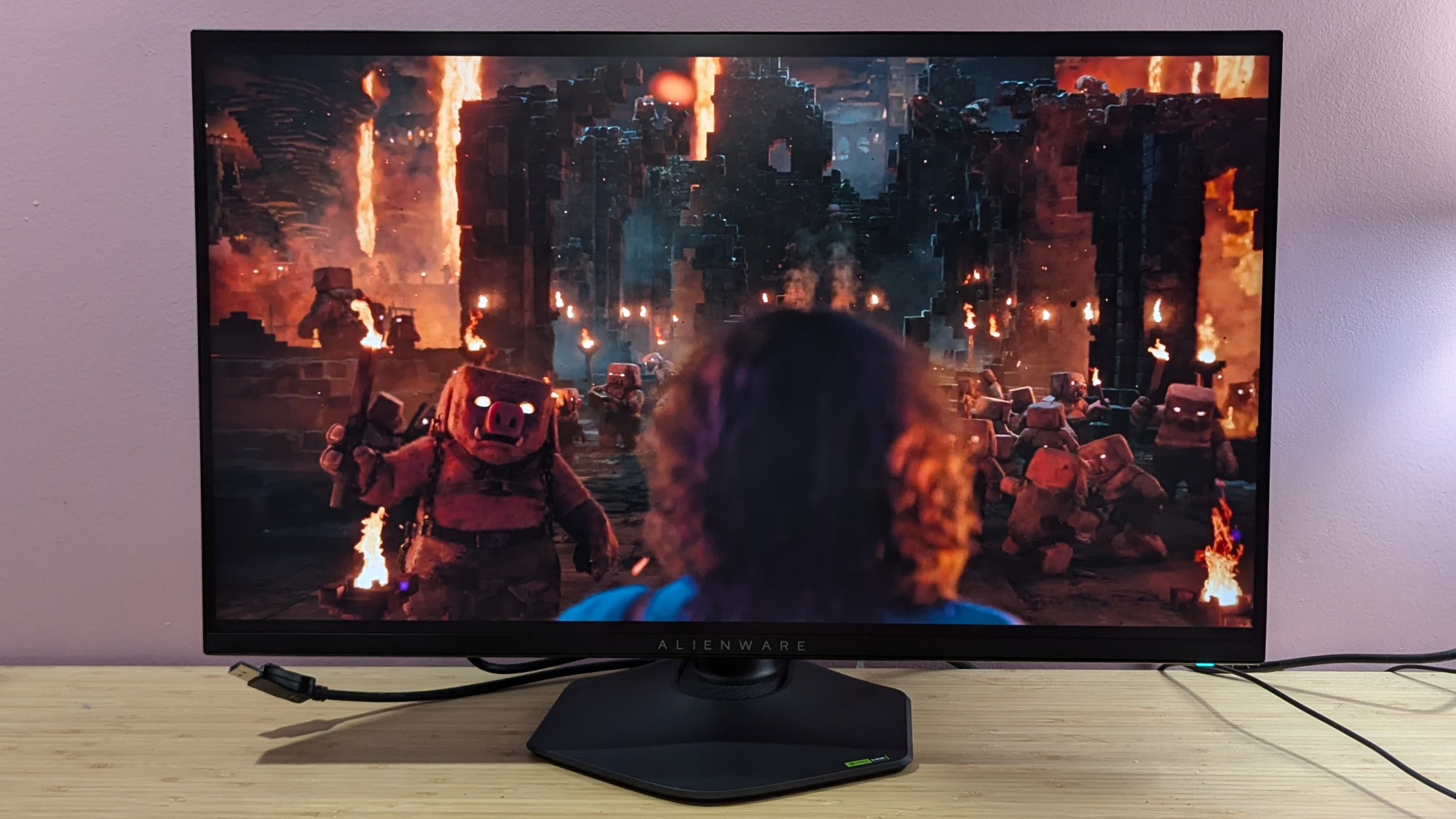
It also benefits from being capable of hitting higher brightness with its LED panel, as OLED is often dimmer. It managed an average of 388 nits of brightness on default settings, which is pretty bright for a gaming monitor. You typically won’t need a panel this luminscient, especially if you’re planning on gaming in a dim room, but it can help when exploring worlds with darker environments (or poor lighting).
Competitors like the ASrock Phantom Gaming PG34 (327 nits), Alienware AW2725DF (242 nits), and Lenovo ThinkVision P27u-20 (238 nits) were quite dimmer. The AW2725QF is also rated for up to 600 nits on HDR mode, which was accurate to our tests, as we saw it reach 675 nits on the default setting at 100%.
Alienware AW2725QF: Audio
The Alienware AW2725QF does not feature built-in speakers, so we recommend checking out our best computer speakers page if you’re in need of an external audio solution.
Alienware AW2725QF: Settings and configuration
Since this monitor is pretty much a two-in-one deal, understanding its settings is vital. It features a power button on the right side beneath the bottom bezel, with a joystick in the middle. Holding down the joystick button will prompt the user to swap between 4K and 1080p resolution modes. Alternatively, you can just press the joystick and then press it again to prompt the swap.
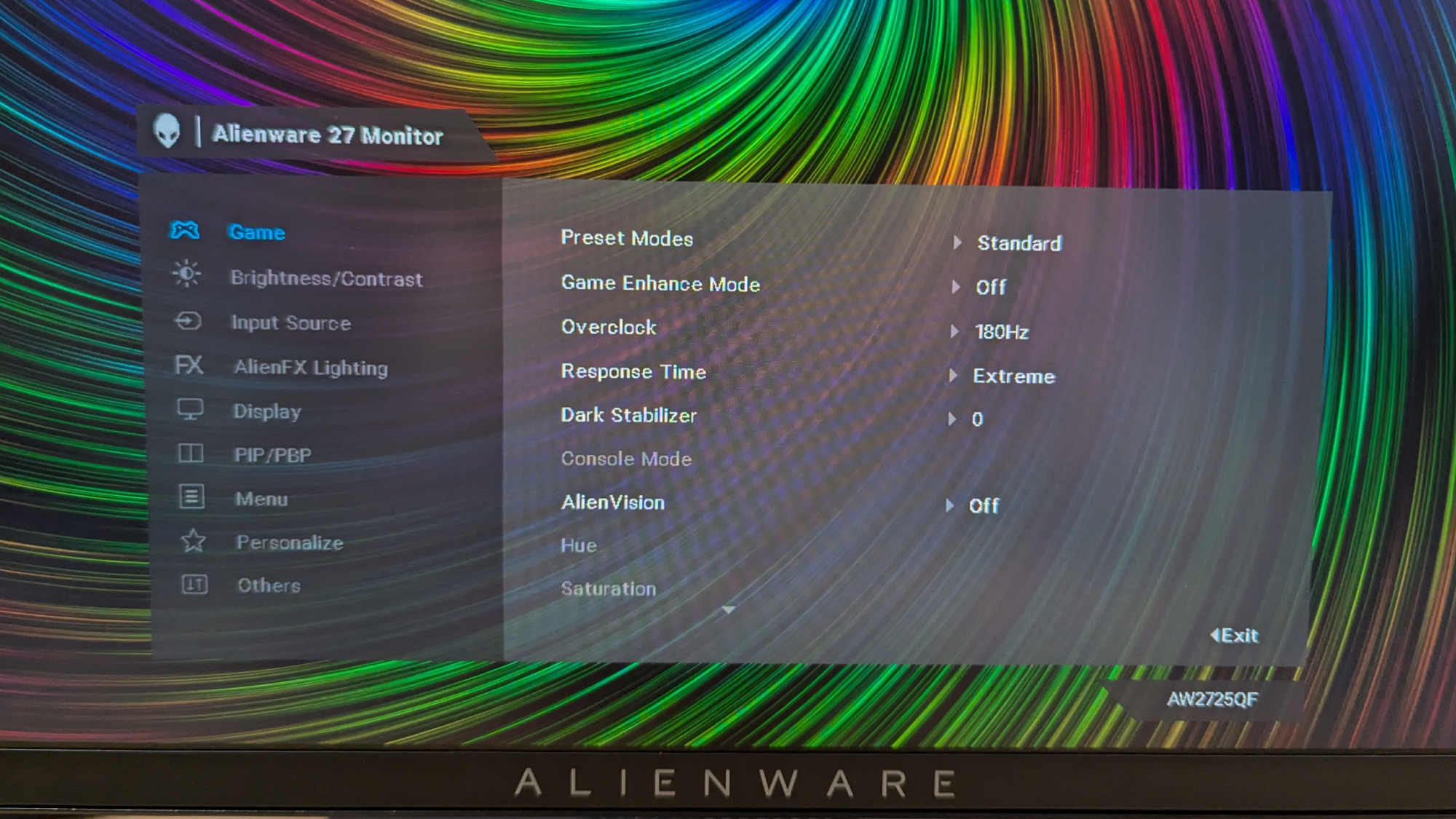
This is a bit frustrating, though, as half of the time I try to enter the menu settings, I almost accidentally swap resolution modes. Considering the process takes a while and causes your entire PC to freeze for a bit, it’s not something you want to do by mistake. A discrete button would be nice.
The settings are also how you make the most use of its refresh rate, as its standard at 4K is 165Hz, and at 1080p it’s 330Hz. To get up to 180Hz and 360Hz, respectively, you need to open the monitor’s settings > select Game > go to Overclock > increase the refresh rate.
Other settings are on the more traditional side, like activating Dolby Vision, utilizing HDR, increasing response time, modifying brightness and contrast, and of course, all of its preset modes. These include Standard, FPS, MOBA/RTS, RPG, Sports, Creator, Warm, Cool, Custom Color, and three modifiable Game presets. Standard and Warm are my favorites, personally.
Bottom line
The Alienware AW2725QF does what it sets out to do pretty well, yielding an impressive display that delivers vivid color and high nits of brightness in a panel that can swap between 4K at 180Hz and 1080p at 360Hz.
However, we wouldn’t recommend it to those who play only one type of game. It’s a niche product that is meant to fulfill the purposes of two monitors in one package, allowing the user to jump from a competitive 360Hz mode to a more laid-back 4K for high fidelity streaming or gaming. But if you have no intention to use the 360Hz setting or are fine with 1080p, there’s no point in purchasing this product.
But if you genuinely see yourself using both, the monitor is incredible, and it’ll be a perfect solution for those who’d rather not purchase two separate monitors.

Self-described art critic and unabashedly pretentious, Claire finds joy in impassioned ramblings about her closeness to video games. She has a bachelor’s degree in Journalism & Media Studies from Brooklyn College and five years of experience in entertainment journalism. Claire is a stalwart defender of the importance found in subjectivity and spends most days overwhelmed with excitement for the past, present and future of gaming. When she isn't writing or playing Dark Souls, she can be found eating chicken fettuccine alfredo and watching anime.

